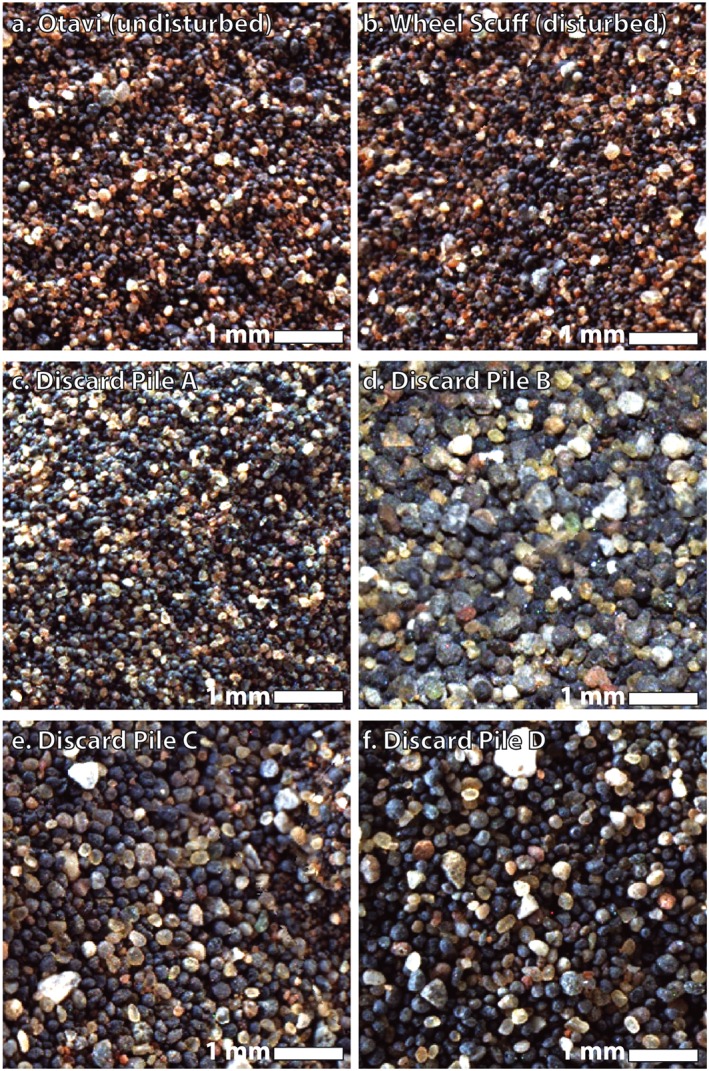Figure 4.

MAHLI focus merge products of sands at the Gobabeb investigation site on the lower north side of Namib dune, each with a linear 2% stretch applied on the whole image. (a) Undisturbed sands at the Otavi target (1242MH0005740000403707R00), (b) disturbed sands within a wheel scuff (1228MH0001700000403450R00), (c) sieved sands of sample discard pile A (<150 μm sieved fraction from Scoop 1; 1242MH0005740000403723R00), (d) sieved sands of discard pile B (>150 μm fraction from Scoop 1; 1231MH0001630000403553R00), (e) sieved sands of discard pile C (150 μm‐1 mm sieved fraction from Scoop 2; 1242MH0005740000403711R00), and (f) over the expected location of the discard pile D (processed to >1 mm from Scoop 2; 1242MH0005740000403709R00). Most images were acquired from ~1 cm standoff distance with the exception of Figure 4c (discard pile A), which was acquired from ~5 mm standoff distance. The pixel scales are similar between images (15.6–17.5 μm/pixel). Opaque gray, translucent yellow, opaque red, and opaque white grains are most typically observed with rarer translucent green and translucent white grains. Products used are the dark‐subtracted, flat‐fielded, DRXX level processed data at resolutions in Table 2.
